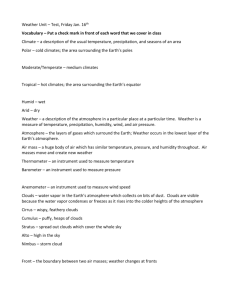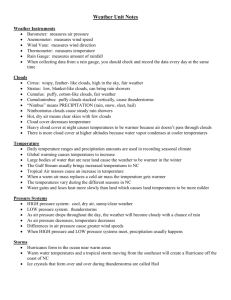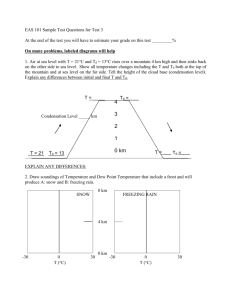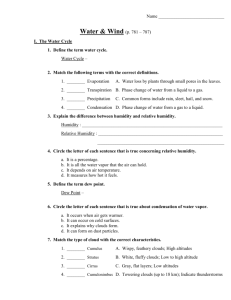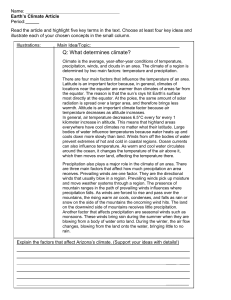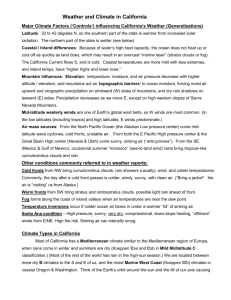Wind, Clouds, and Precipitation
advertisement
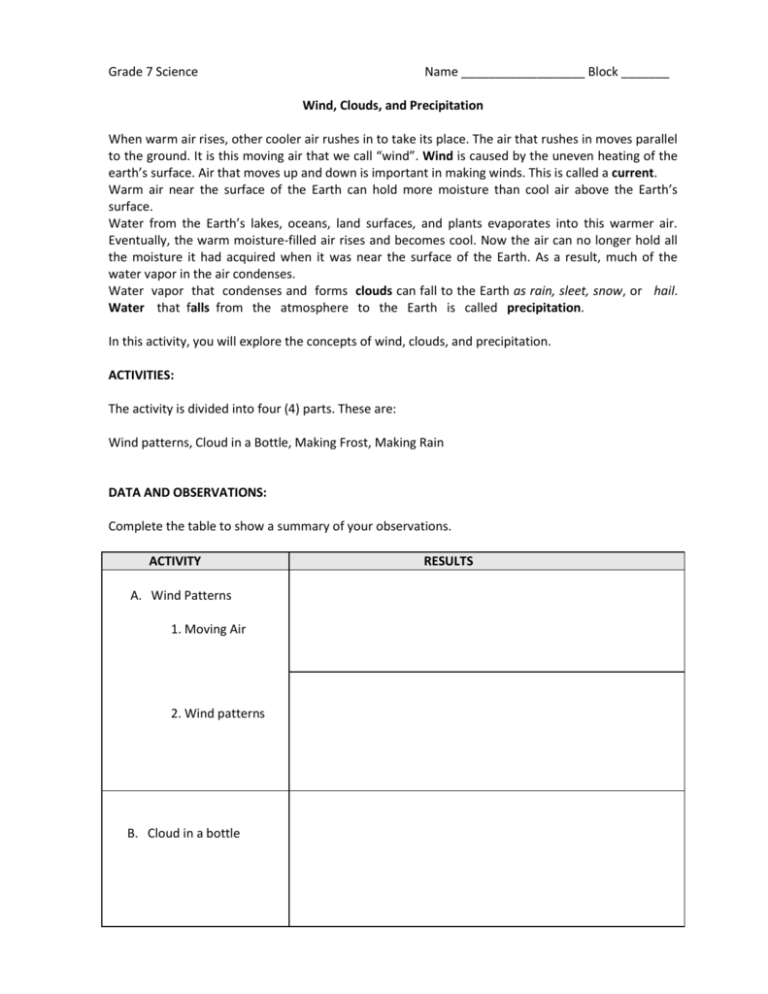
Grade 7 Science Name __________________ Block _______ Wind, Clouds, and Precipitation When warm air rises, other cooler air rushes in to take its place. The air that rushes in moves parallel to the ground. It is this moving air that we call “wind”. Wind is caused by the uneven heating of the earth’s surface. Air that moves up and down is important in making winds. This is called a current. Warm air near the surface of the Earth can hold more moisture than cool air above the Earth’s surface. Water from the Earth’s lakes, oceans, land surfaces, and plants evaporates into this warmer air. Eventually, the warm moisture-filled air rises and becomes cool. Now the air can no longer hold all the moisture it had acquired when it was near the surface of the Earth. As a result, much of the water vapor in the air condenses. Water vapor that condenses and forms clouds can fall to the Earth as rain, sleet, snow, or hail. Water that falls from the atmosphere to the Earth is called precipitation. In this activity, you will explore the concepts of wind, clouds, and precipitation. ACTIVITIES: The activity is divided into four (4) parts. These are: Wind patterns, Cloud in a Bottle, Making Frost, Making Rain DATA AND OBSERVATIONS: Complete the table to show a summary of your observations. ACTIVITY A. Wind Patterns 1. Moving Air 2. Wind patterns B. Cloud in a bottle RESULTS C. Making Frost D. Making Rain QUESTIONS: 1. There are two main groups of winds: planetary and local winds. Planetary winds move across our entire planet and blow high in the atmosphere. Local winds move across small areas and blow low allowing us to feel them on the ground. In what direction do winds blow? Explain. __________________________________________________________________________________ __________________________________________________________________________________ __________________________________________________________________________________ __________________________________________________________________________________ __________________________________________________________________________________ __________________________________________________________________________________ 2. Explain how clouds are formed. ______________________________________________________ __________________________________________________________________________________ __________________________________________________________________________________ __________________________________________________________________________________ __________________________________________________________________________________ __________________________________________________________________________________ 3. Describe how frost is formed.________________________________________________________ __________________________________________________________________________________ __________________________________________________________________________________ __________________________________________________________________________________ __________________________________________________________________________________ __________________________________________________________________________________ 5. Draw a simple flowchart to show how raindrops are formed.




